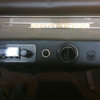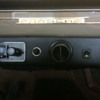"HOOOOOLD ON THERE, BABA LOUIE!
The reason you have a ground on the switch is to complete the circuit for the lamp in the switch. That's all. If you don't have a light in the switch, you won't need a ground for the switch.
Other than that, either of your diagrams will work.
You're just trying to close one main circuit (which is normally "off" or "open" if the switch is "off") but consider the switch lamp to be a "slave circuit" that parallels the main circuit.
So, looking at your first (blue base) switch, "C" = common (12V input) , "NO" = Normally Open (when the switch is off) and "NC" = Normally closed (when the switch is off). Just to the left of the "NO" tab is the tab for the lamp which gets connected to the "NO" tab. The wire from the relay also goes to the "NO" tab so that both the relay and lamp will energize (love that word) at the same time, when you push the switch to "ON".
The "-" tab on the right is simply a ground to complete the circuit to the switch lamp. Other than that, it serves no other purpose.
If you use a Ray-style switch with just two tabs, then wire it up just like his diagram and it'll work. Doesn't matter what goes to which tab - one side is the power source, the other side is the relay - doesn't matter which (unless your wires are short!). That's it.

















